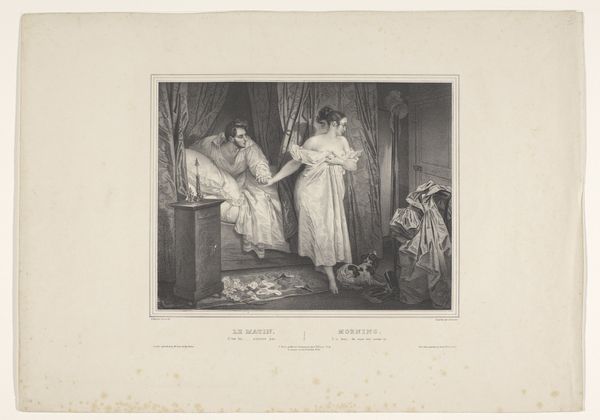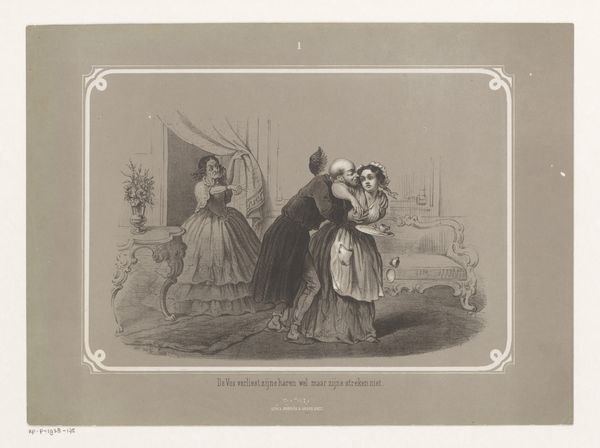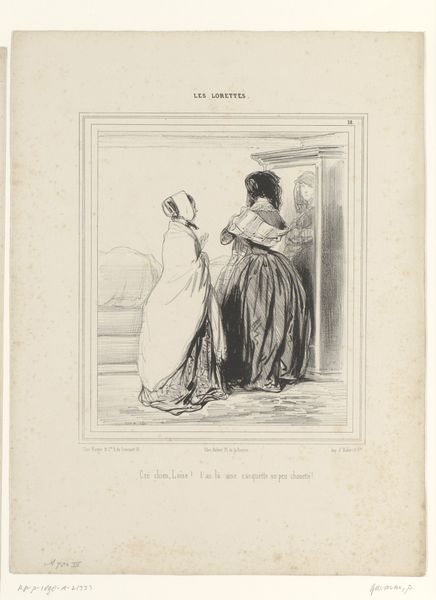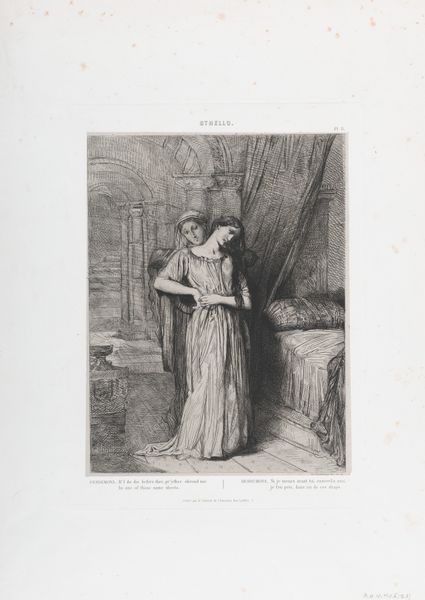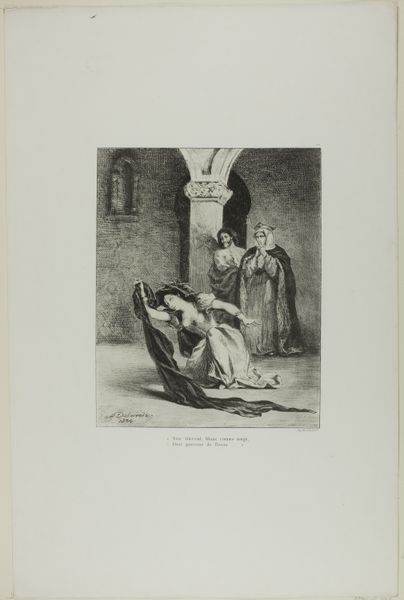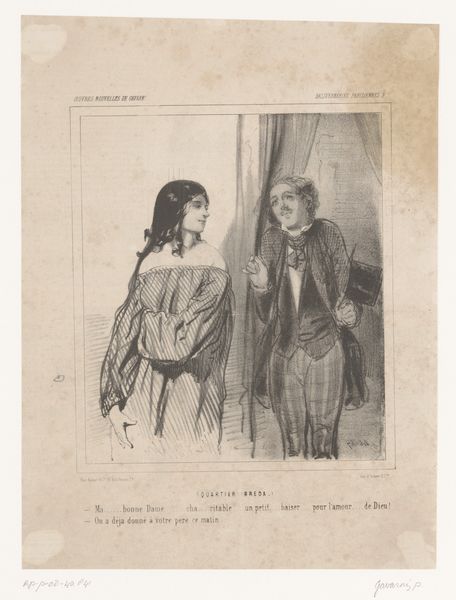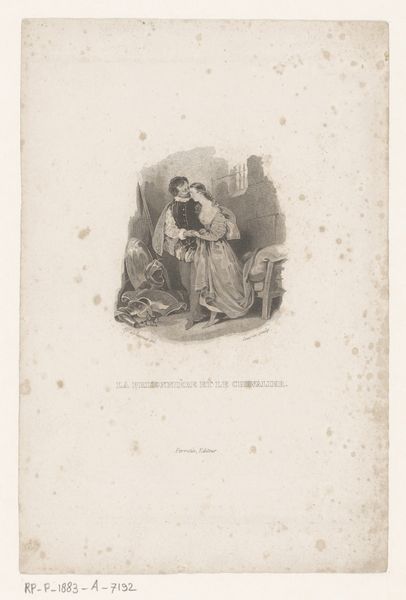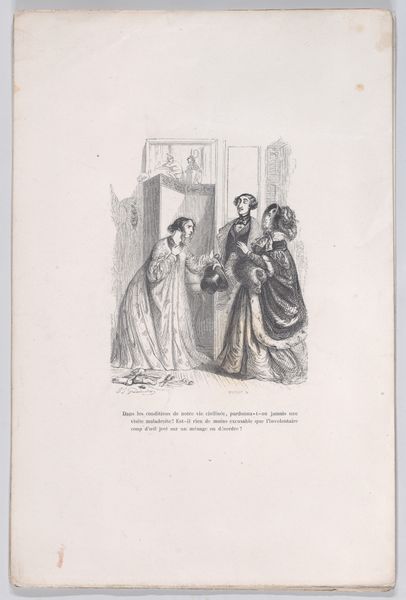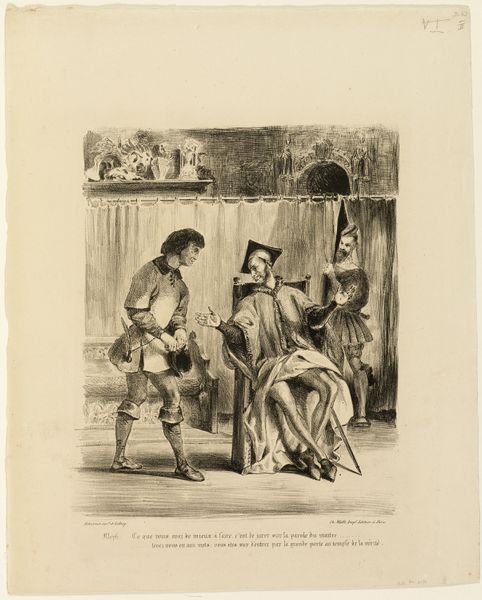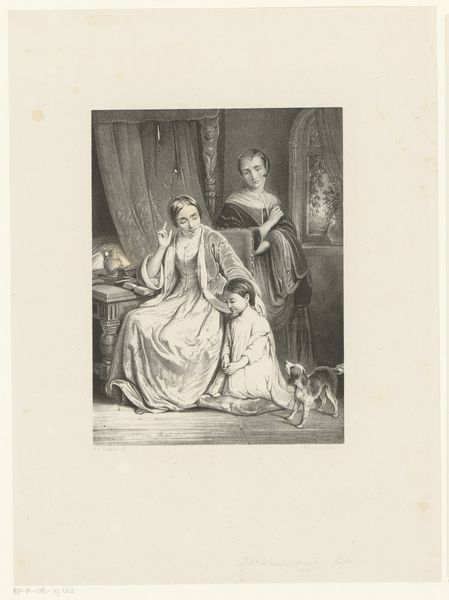
drawing, print, etching, paper, ink, engraving
#
portrait
#
drawing
#
narrative-art
# print
#
etching
#
figuration
#
paper
#
ink
#
romanticism
#
history-painting
#
engraving
Dimensions: 293 × 229 mm (image); 368 × 263 mm (plate); 638 × 445 mm (appro×. sheet)
Copyright: Public Domain
Curator: This is "The Willow Song, plate nine from Othello" by Théodore Chassériau, created in 1844. It’s an etching, rendered in ink on paper, and part of the collection here at The Art Institute of Chicago. Editor: What immediately strikes me is the tangible sorrow emanating from the piece. The weight of the woman's posture, the dark inks used to create a shadowy interior... it all speaks of intense emotional distress. Curator: Indeed. Chassériau masterfully uses line and shadow to convey the tragic weight of Desdemona's despair in the moments before her death. Notice the structural elegance in the composition; the vertical lines of the architecture, contrasting with the languid curve of Desdemona's body, create a tension that speaks to her constrained position. Editor: And the craft of the etching itself – look closely, and you see the controlled chaos of the lines. The meticulous cross-hatching builds volume and also hints at the restless anxiety I am feeling, yet there's still a precision that suggests his level of making. It’s far more than just a method of reproduction. Curator: Precisely! Chassériau manipulates the inherent properties of the medium to amplify the drama. The print's limited tonal range intensifies the emotional impact, forcing us to focus on the stark contrast between light and shadow and reflect upon our expectations from romantic painting. Editor: Considering this was created as a print, presumably for wider distribution, it also offers insights into how Shakespeare’s dramas were consumed as popular culture. Beyond its aesthetic qualities, it served a social purpose. Curator: It's true; beyond the artistic form is also the reproduction, how Chasseriau engaged a popular play in his world and his time. Ultimately, he gave form to tragedy by way of an incisive printmaking technique. Editor: Seeing this etching has expanded my perspective of how we experience tragedy as part of a larger history, where plays and their adaptations find new contexts across different layers of reproduction and social experience.
Comments
No comments
Be the first to comment and join the conversation on the ultimate creative platform.
